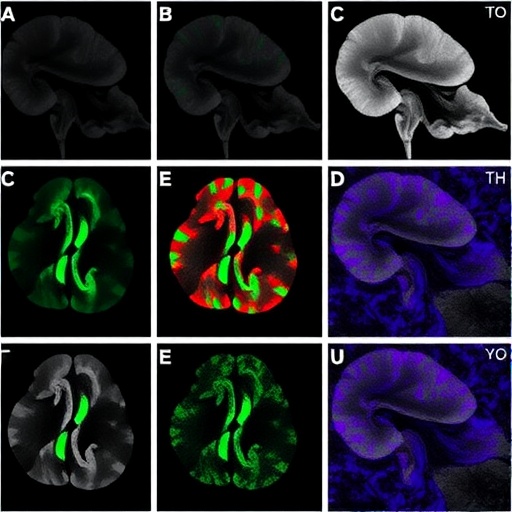In a groundbreaking study that challenges prevailing assumptions about aging and neurochemical function, researchers have discovered that the corticostriatal pathway remains remarkably intact in aged mice deficient in the cystine/glutamate antiporter system x_c^-. This revelation, published in Translational Psychiatry, opens new avenues for understanding the neurobiological underpinnings of aging and neurodegeneration. The investigation combines advanced electrophysiological methods and rigorous behavioral testing to unravel the role of system x_c^- in maintaining neural circuit integrity with advancing age.
The corticostriatal pathway, a critical conduit between the cerebral cortex and the striatum, orchestrates a myriad of motor and cognitive functions. Dysfunction in this neural circuit has been implicated in an array of neuropsychiatric conditions, including Parkinson’s disease, Huntington’s disease, and various forms of dementia. System x_c^- is known for its bidirectional exchange of extracellular cystine and intracellular glutamate, thus influencing glutamatergic neurotransmission and redox homeostasis. Its deficiency has been proposed to dysregulate neural signaling and exacerbate oxidative stress, potentially accelerating age-related cognitive decline.
Contrary to expectations, however, the study’s findings indicate that aged mice genetically engineered to lack system x_c^- retain normal corticostriatal transmission. Employing electrophysiological recordings from brain slices, the research team observed that synaptic strength and plasticity within this circuit were comparable to those of aged wild-type controls. This intact functionality was corroborated by behavioral assays measuring motor coordination and cognitive flexibility, where the system x_c^- deficient mice performed on par with their normal counterparts.
The implications of these results are profound. They suggest that the loss of system x_c^- does not precipitate deficits in corticostriatal communication during aging as previously hypothesized. Instead, compensatory mechanisms may sustain excitatory neurotransmission and antioxidant defenses in the absence of this antiporter. Identifying such compensatory pathways could illuminate novel targets for therapeutic intervention in neurodegenerative diseases characterized by corticostriatal disruption.
Importantly, the study also underscores the complexity of glutamate homeostasis in the aging brain. While system x_c^- contributes to extracellular glutamate levels, alternative glutamate transporters and release mechanisms may buffer its absence. This redundancy might preserve synaptic function and prevent excitotoxicity, a common hallmark of aged and diseased neural tissue. The nuanced interplay between different glutamate handling systems could serve as a protective factor mitigating age-related neural decline.
Moreover, redox balance was examined through markers of oxidative stress and antioxidant capacity, revealing no significant elevation of oxidative damage in aged system x_c^- deficient mice. This challenges the idea that system x_c^- is indispensable for antioxidant protection in the aging brain. It further highlights the multifaceted nature of oxidative defense systems, including glutathione synthesis pathways, superoxide dismutase activity, and other thiol-based mechanisms that may compensate effectively.
The methodological rigor of the investigation deserves special mention. Longitudinal studies spanning the lifespan of the murine model ensured relevance to natural aging processes. Precise stereotaxic targeting for electrophysiological recordings allowed accurate assessment of corticostriatal synapses without confounding inputs. Behavioral paradigms were carefully selected to probe both motor and executive functions, providing a holistic view of corticostriatal health.
From a translational perspective, these findings raise intriguing questions regarding the potential for system x_c^- modulation in human neurodegenerative diseases. While its inhibition has been explored as a strategy to attenuate glutamate excitotoxicity in acute brain injury, this study cautions against assumptions about detrimental effects in aging populations. Therapeutic approaches may need refinement to consider the distinct roles of system x_c^- across disease states and life stages.
The genetic model utilized—mice lacking SLC7A11, the gene encoding a core component of system x_c^-—was crucial in isolating the antiporter’s functions. This knockout model exhibited no gross anatomical abnormalities, further supporting the notion that system x_c^- is non-essential for baseline corticostriatal structure. Nonetheless, subtle molecular adaptations warrant deeper molecular and transcriptomic scrutiny.
Future studies are anticipated to probe the identity of compensatory glutamate transporters or signaling molecules preserving corticostriatal integrity. Additionally, examining other neural circuits vulnerable to aging, such as the hippocampal-entorhinal pathway, may reveal differential dependencies on system x_c^- function. Understanding the cellular and molecular mechanisms enabling resilience in the aged brain will be key for therapeutic innovation.
In conclusion, this comprehensive analysis overturns prior assumptions about the indispensability of system x_c^- in the aging brain’s corticostriatal function. The robustness of synaptic transmission and preserved behavioral outcomes in deficient mice illuminate a landscape of neural plasticity and molecular redundancy. As the neuroscience community continues to unravel the complexities of brain aging, these insights underscore the importance of re-evaluating established paradigms and exploring compensatory neurobiological strategies.
The study, authored by De Pauw, Villers, Moore, and colleagues, represents a significant contribution to the field of aging and neuropsychiatry. Published in late 2025, it will undoubtedly catalyze further research into the molecular choreography that sustains brain function despite genetic and environmental challenges posed by aging. By refining our understanding of glutamate cycling and redox homeostasis, new paths toward preserving cognitive health into advanced age may emerge.
Ultimately, the discovery that system x_c^- deficiency does not compromise corticostriatal circuitry in aged mice invites optimism about the brain’s innate capacity to adapt and maintain function in the face of molecular perturbations. This resilience may hold the key to prolonging cognitive vitality and combatting the ravages of neurodegeneration, inspiring researchers and clinicians alike to explore the untapped strategies the aging brain employs to stay intact.
Subject of Research: Neurobiological effects of system x_c^- deficiency on corticostriatal function in aged mice.
Article Title: Intact corticostriatal function in aged system x_c^- – deficient mice.
Article References:
De Pauw, L., Villers, A., Moore, C. et al. Intact corticostriatal function in aged system x_c^- – deficient mice. Transl Psychiatry 15, 471 (2025). https://doi.org/10.1038/s41398-025-03686-9
Image Credits: AI Generated
DOI: 10.1038/s41398-025-03686-9




